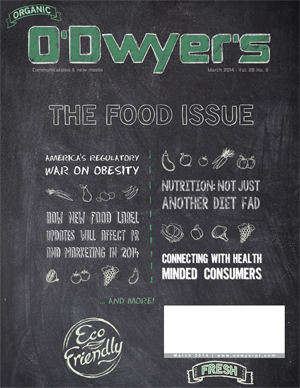|
|
Federal health agencies have changed their tactics in the battle over obesity. After decades of passive campaigns meant to educate Americans on the dangers of excessive fats and sugars, authorities have now ditched this strategy for more aggressive measures.
For years the efficacy of anti-obesity outreach has been doubted, but health authorities seem convinced that this new gloves-off approach will get the public’s attention.
On February 25, U.S. health and nutrition experts received some unexpected news. A study published in The Journal of the American Medical Association claimed obesity rates among children between the ages of two and five had dropped 43% in the last decade.
That report, part of a massive federal health survey conducted by the Centers for Disease Control and Prevention, marked the first time the agency had measured a significant decrease in weight for any age group.
Unfortunately, the vast majority of Americans captured in the CDC study didn’t fare as well. In fact, the CDC report claimed that women aged 60 years and older had actually experienced “a significant increase in obesity” during the same period.
For fifteen years, obesity in America has been classified as an epidemic by the World Health Organization. Numbers back up this designation.
According to the CDC, more than a third of U.S. adults — 36% — are obese. In the two decades between 1990 and 2010 obesity doubled among U.S. adults, and approximately 17% of children between the ages of two and 19 are now obese. Obesity has become America’s bête noire. It has created a national health crisis.
The New York Times on February 25 interviewed health and nutrition experts who posited their explanations for childrens’ precipitous weight drop as reported by the CDC study.
Some experts noted that young children now consume fewer sugary beverages than a decade prior, and that low-calorie foods have become popular for families with children. Experts also pointed to the slew of new federal and state policies that have been enacted to fight obesity.
While a silver-bullet answer remains elusive, each of these theories hint at an underlying notion: that pervasive, years-long federal outreach on the dangers of unhealthy foods might finally be working.
Health agencies get tough
On the same day that The New York Times reported on the CDC study, another food-related story was making headlines: First Lady Michelle Obama’s Let’s Move! initiative, working in conjunction with the USDA, announced that beverage companies could no longer advertise soft drinks and other junk food products at public schools.
The new rules would also apply to soda advertising on athletic fields and gymnasium scoreboards. Beverage companies (who currently comprise more than 90% of school marketing) could still advertise healthy alternatives like bottled water or diet soda, and after-school fundraisers and concessions at sports events would be exempt.
The USDA, meanwhile, announced it was rolling out its much-awaited updates to school lunches, which mandate new caloric, fat and sodium compliance standards.
Finally, the Food and Drug Administration on February 27 unveiled its long-awaited changes to the Nutrition Facts label, those ubiquitous black and white boxes found on food packages. Calorie counts now appear in larger type, added sugars get a mention separate from sugars natural to the product, and the parameters of “serving size” have been adjusted to reflect sizes consistent with current consumption habits.
Fighting obesity has clearly become a priority for U.S. federal agencies. What’s just as clear, however, is that a behavioral shift is underway in how these agencies go about making those national health goals a reality.
Gone are the days of merely educating consumers to the dangers of high fat and sugar diets; as recent actions by the USDA and FDA indicate, regulation at the federal, state and local level is now the preferred method in guiding and ultimately influencing preferred consumer behaviors. The million-dollar question is: will it make a difference?
Consumers growing health conscious
Early findings indicate that a growing number of Americans are beginning to heed the warnings on the dangers of unhealthy foods.
New York-based Hunter Public Relations performs an annual study that gauges Americans’ responses and opinions of the top food-related headlines of each year.
The newest study found that childhood obesity rated as the top food news story of 2013. The Hunter study, which also grades consumer sentiment and trust, found that childhood obesity ranked highest not only in terms of general consumer awareness but also in level of highest concern.
Moreover, the Hunter study also indicated that there might be a corollary between the media’s recent coverage of obesity and consumers’ newfound awareness and concern surrounding this issue.
More Americans said they’re now reading food labels and paying attention to ingredients, and half of those polled said they make food purchasing decisions based on headlines they had seen.
If the Hunter study is any indication, consumers may be altering their eating behaviors based on the media’s coverage of recent actions undertaken by the FDA, USDA, and the Let’s move! initiative.
“The media’s coverage of childhood obesity has been substantial,” said Grace Leong, Managing Partner at Hunter PR. “Anytime the White House is behind something, it makes a difference. The First Lady’s messages have been very consistent, and there’s just no denying that they’re having an impact.”
Will regulatory measures like the recent steps enacted by the FDA, USDA and the Let’s Move! initiative become the standard government response to the obesity epidemic? While the efficacy of these recent measures still demands debate, telling people what to eat is a message that, traditionally, hasn’t gone over well.
Who could forget the national ire raised in response to former New York City Mayor Michael Bloomberg’s war on obesity — city-wide bans on trans fats, graphic city ad campaigns detailing limb amputations as a result of diabetes, requiring restaurants to display calorie information, and most famously, an ill-fated ban on large soda containers?
A growing number of Americans may say they want to eat healthier, but health authorities now seem to have moved beyond the education model as a means of moving the needle in coercing future behavior.
“If you look back at education campaigns, historically speaking, they don’t work,” Leong said. “We educated people on smoking and they still smoked. You might hear what the studies are saying, but you still drink too much soda. So Bloomberg said, ‘No one’s listening to the data, so I’m taking matters in my own hands.’ The campaigns are similar, they’re still interested in raising awareness of the problem, but there’s now a strong-arming component, because we know nothing else works.”



 What the biggest meal of the day can teach us about serving up effective nutrition communications campaigns.
What the biggest meal of the day can teach us about serving up effective nutrition communications campaigns. Tips to refine and amplify your CPG brand strategy to win in 2024 and beyond.
Tips to refine and amplify your CPG brand strategy to win in 2024 and beyond. Strategic communications strategies for success in the growing “food is medicine” movement.
Strategic communications strategies for success in the growing “food is medicine” movement. How brands can authentically communicate sustainability issues and create a brand experience that’s compatible with consumers’ values.
How brands can authentically communicate sustainability issues and create a brand experience that’s compatible with consumers’ values. Communicating the effects that climate change and a growing world population have on our food system—and why change is needed.
Communicating the effects that climate change and a growing world population have on our food system—and why change is needed.


 Have a comment? Send it to
Have a comment? Send it to 
No comments have been submitted for this story yet.